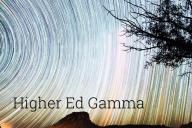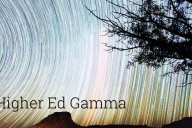You have /5 articles left.
Sign up for a free account or log in.
I recently attended a performance of the National Theatre and Bristol Old Vic’s musical adaptation of Charlotte Brontë’s 1847 novel Jane Eyre, a story that brilliantly reimagines the Bildungsroman (the novel of development) through a female perspective, subverting many conventions of the genre.
The novel traces one woman’s journey toward selfhood in a society that denies her autonomy, inviting readers to reflect on the complexities of female growth, the desire for personal freedom and the struggle women face in asserting their rights and identities. Jane Eyre thus becomes not only a personal journey but also a social critique of the constraints imposed on women in Victorian society.
Brontë’s portrayal of Jane was revolutionary: She created a protagonist who defies 19th-century expectations for women, asserting her independence, resilience and self-worth. One of the most compelling aspects of Jane Eyre from a feminist perspective is Jane’s insistence on her own dignity and integrity. Despite her status as an orphan and her limited financial means, Jane refuses to submit to those who try to diminish her value—whether family members, school authorities or employers. Her resistance to Mr. Rochester’s initial attempts to mold or possess her reflects her demand to be seen as an equal, not a subordinate.
The novel repeatedly challenges traditional roles assigned to women. Jane’s refusal to marry St. John Rivers, despite his appeal to duty and morality, underscores her determination to marry on her own terms. She seeks a marriage of true partnership, not one based on sacrifice or social expectation, reflecting her commitment to personal fulfillment over conventional female submission.
Jane’s journey toward personal and economic autonomy further distinguishes her from many female characters in Victorian literature, who often rely on marriage for security. She is determined to achieve independence first and only accepts Rochester when they can meet as equals. This reversal of the typical dependency trope highlights Brontë’s progressive portrayal of a woman’s right to control her own destiny.
Jane Eyre also exposes the destructive effects of patriarchy through characters such as Mr. Brocklehurst, St. John Rivers and even Mr. Rochester in the early stages of his relationship with Jane. Mr. Brocklehurst’s tyrannical oversight of Lowood School reflects how religion and authority were often used to subjugate women. St. John represents a different form of control, appealing to duty and guilt in his attempt to bend Jane’s will to his rigid ideals. Even Mr. Rochester’s attempts to dominate Jane are scrutinized, with his eventual transformation and humility occurring only when he recognizes her independence and self-worth.
Feminist readings also highlight the importance of female relationships in Jane Eyre. Jane’s friendships with Helen Burns and Miss Temple offer her a sense of belonging and models of strength and resilience in a society that limits women’s opportunities. Unlike her relationships with men, which often involve power struggles, Jane’s relationships with women provide mutual respect, comfort and growth.
The novel critiques societal expectations around beauty and class, which often confined women to roles defined by appearance and social standing. Jane is described as “plain” and refuses to conform to societal standards of beauty, yet she maintains a strong sense of self-worth. Her rejection of wealth and status as markers of value reinforces Brontë’s challenge to social norms that judged women by superficial standards.
At the heart of Jane Eyre is a radical redefinition of love and marriage. Rather than accept Mr. Rochester’s initial proposal, which would have compromised her independence, Jane leaves him to preserve her integrity. Their eventual reunion, founded on mutual respect and equality, embodies a feminist vision of marriage that values personal integrity and shared respect over economic security or social convention.
Through its layered portrayal of one woman’s quest for autonomy, Jane Eyre critiques the societal constraints placed on women and envisions a world where love and partnership are based on equality and respect. Brontë’s novel remains a powerful exploration of the challenges and triumphs of asserting female identity and self-worth within a patriarchal society, making it as relevant today as it was in the Victorian era.
Jane Eyre offers rich material for various critical interpretations—Marxist, postcolonial and psychoanalytic—which reveal deeper layers of meaning in its portrayal of class, power and identity. Each of these perspectives uncovers unique insights into the social hierarchies, colonial ideologies and psychological dynamics at play in 19th-century British society, making Jane Eyre an enduring work that speaks to the complexities of human experience and societal structures.
A Marxist reading of Jane Eyre reveals the novel’s intricate engagement with class struggle and economic exploitation. Jane’s journey—from a poor orphan to an independent woman—underscores the limited social mobility available to individuals outside the aristocratic and wealthy classes in Victorian England.
As a governess, Jane occupies a liminal position, neither fully a servant nor a member of the family she serves, highlighting the economic exploitation and social marginalization faced by women of the lower middle class who relied on the wealthy for security but were excluded from their privileges.
The character of Mr. Rochester further emphasizes the novel’s critique of capitalism; despite his moral flaws, his wealth grants him control over Thornfield and those within it, embodying the era’s class hierarchy. Bertha Mason, hidden in the attic when she becomes an “inconvenience,” epitomizes the dehumanization and disposability often imposed on individuals without power or status.
When Jane ultimately inherits a fortune, the story suggests a hopeful redistribution of wealth that grants her autonomy and an equal partnership with Rochester. However, this ending also reinforces the idea that true independence in Victorian society was largely contingent upon financial security, which was accessible to only a select few.
From a postcolonial perspective, Jane Eyre reveals its imperialist undertones through the character of Bertha Mason, who hails from Jamaica and symbolizes the exoticized other. Her portrayal as irrational and dangerous reflects 19th-century British attitudes toward colonized peoples, who were often depicted as uncivilized and in need of European control.
Bertha’s family’s wealth, gained through colonial exploitation, underscores Britain’s economic reliance on its colonies, complicating Rochester’s simultaneous benefit from and shame about his colonial ties. The dehumanizing treatment of Bertha—locked away when her presence disrupts Rochester’s ambitions—mirrors the British Empire’s tendency to suppress colonized people when they became inconvenient or threatening.
Jane’s own inheritance, gained from an uncle involved in British trade in Madeira, further suggests that her independence is indirectly tied to colonial wealth, illustrating how British prosperity often stemmed from imperial ventures. In this way, the novel unconsciously reinforces colonial ideologies even as it critiques certain power dynamics, and Bertha’s tragic end in the fire at Thornfield symbolizes the destructive consequences of suppressing colonized voices and histories.
A psychoanalytic interpretation of Jane Eyre sheds light on the novel’s psychological complexity and the inner struggles of its characters. Jane’s life is marked by trauma and repression, particularly in her childhood at Gateshead, where isolation and abuse shape her deep-seated desire for love and self-worth. This early experience fosters her fierce independence and emotional restraint, defense mechanisms that allow her to navigate a world where she often feels marginalized.
The Red Room episode, in which young Jane is locked in a dark, oppressive space, symbolizes her repression and the psychological confinement she endures, embedding in her a fear of abandonment and a need for control. Her journey can be viewed as an ongoing process of reconciling these inner conflicts, particularly the tension between her need for love and her fierce autonomy.
Thornfield Hall itself, with its dark passages and the hidden presence of Bertha, serves as a symbol of the unconscious mind, where repressed emotions and desires lie. Bertha can be interpreted as Jane’s “double” or shadow, embodying the raw emotions Victorian society forced women to suppress, such as anger and passion. Her confinement reflects the consequences of repressing one’s inner self, suggesting that true psychological integration requires acknowledging rather than concealing these aspects.
Rochester, too, plays a dual role as both a father figure and romantic partner, representing Jane’s ambivalent relationship to authority. Their relationship’s complexities reflect Jane’s struggle to balance her need for connection with her commitment to autonomy. In this way, her reunion with Rochester at the novel’s end symbolizes her journey toward psychological wholeness, achieved through a reconciliation of desire, self-respect and mutual respect.
Together, these perspectives illustrate how Jane Eyre critiques and reflects societal structures, encouraging readers to consider how class, power, identity and colonial ideologies shape both the characters’ lives and our own social realities.
By examining Jane Eyre through multiple lenses, we gain a deeper understanding of the novel’s relevance to its historical context while also recognizing its resonance with contemporary issues of inequality, identity and selfhood. In this way, Jane Eyre exemplifies how literature can illuminate the complex interplay between individual psychology and societal forces, offering timeless insights into the human condition.
The skills we use to read a text closely, critically and analytically are the very skills that help us navigate the complexities of real life, especially when it comes to understanding human relationships. Just as reading literature requires attention to nuance, context and underlying motivations, so too does interacting effectively with others.
When we read critically, we look beyond the surface of words to grasp subtleties in language, motivations of characters and the dynamics driving the story. We analyze context, interpret unspoken tensions and connect events with characters’ inner lives. This process trains us to observe carefully, interpret thoughtfully and question our own assumptions—skills that are invaluable in real life, where understanding people’s intentions, emotions and perspectives is crucial.
In relationships, much like in literature, what matters most is often what isn’t said outright. Reading a novel teaches us to read between the lines, picking up on subtle clues, shifts in tone and symbolism, which helps us become more attuned to cues in real-life interactions. This attentiveness enables us to navigate complex social dynamics, identify conflicts and respond with empathy.
Close reading also teaches us to suspend judgment, fostering a habit of seeking understanding before forming conclusions. This mirrors empathetic listening in relationships, where understanding another person’s point of view is key. Just as we seek to understand a character’s background, influences and emotions, we become more skilled at approaching real-life interactions with curiosity rather than immediate judgment, leading to more meaningful connections.
Literature also teaches us to recognize patterns, anticipate outcomes and understand cause and effect—all valuable in relationships. As we notice recurring themes and cycles in stories, we gain the ability to recognize behavioral patterns in people, helping us respond proactively. This awareness can lead to defusing tensions or offering support before conflicts escalate.
Finally, literature often presents ethical dilemmas and moral questions, encouraging us to reflect on our own values and choices. This reflection builds our moral awareness and helps us approach our relationships with integrity. Learning to navigate the ethical complexities of a text—seeing how different characters grapple with right and wrong—helps us clarify our own values and judgments, influencing how we engage with others in real life.
The close reading of literature isn’t just an academic exercise; it’s a training ground for life, cultivating empathy, insight and ethical awareness that enhance our ability to connect, understand and respond thoughtfully to the people around us.
Prepare for life, one novel at a time
Close reading teaches us to understand people, relationships, motives and contexts. Fiction enhances our ability to perceive social nuances, recognize cues, interpret unspoken motives and grasp the dynamics that shape human interactions. It’s not just escapism; it’s a guide to human complexity.
When we read works of literature, we sharpen our ability to read between the lines of relationships, understanding the psychology and social contexts that define human connections. Fiction captures the vast tapestry of human experience, letting us witness characters facing dilemmas, navigating relationships and revealing unseen forces at play. When we analyze a novel, we’re not simply following a story line—we’re training ourselves to interpret the subtleties of human behavior.
Through close reading, we gain more than analytical skills; we become more insightful observers of the world. The same careful analysis we apply to characters’ motives and conflicts enables us to better understand real-life situations. Literature trains us to recognize what lies behind words, gestures and silences, becoming a training ground for empathy, perception and social navigation.
To read a novel deeply is to see life through a sharper lens, capturing both the struggles and the joys of characters within the nuanced web of human interaction. Literature teaches us the invaluable skill of looking beneath the surface, equipping us to navigate our own relationships with greater thoughtfulness. Close reading isn’t just about understanding stories; it’s about developing the insight needed to navigate life’s complexities with clarity and compassion.
Engaging deeply with literature fosters perceptiveness, empathy and self-awareness. Through the careful dissection of characters and motives, we build the skills to navigate our own relationships thoughtfully. In a world where discourse, expression and subtlety shape every interaction, these abilities empower us to connect meaningfully with those around us.
Literature enriches our lives, fostering an attentiveness to others’ unspoken experiences. It prepares us to read the narratives unfolding daily in our own lives and equips us to respond with genuine perceptiveness and compassion. Stories become a tool kit for life, helping us recognize the nuances of power, intention and vulnerability that color human relationships.
Critical reading opens a world of insight that transcends fiction. It equips us to see beyond facades, understand the emotional undercurrents of interaction and connect more deeply with those around us. Literature does more than tell stories; it prepares us for lives of empathy, discernment and connection, cultivating a profound understanding of human nature that is both timeless and essential.



